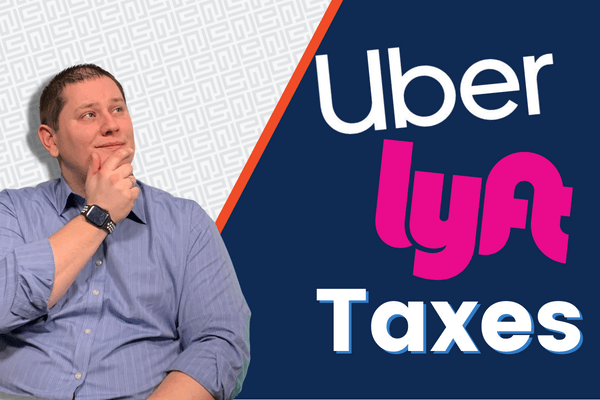Are you thinking of becoming a rideshare driver for Uber or Lyft? Great idea! Not only is it a flexible way to earn extra cash, but it’s also a fun way to meet new people and explore your city.
However, before you hit the road, it’s important to understand the Uber and Lyft tax implications of being a self-employed driver. Don’t let taxes put a damper on your earning potential.
In this blog post, we’ll break down everything you need to know about filing taxes as a rideshare driver.
From calculating your estimated taxes to tracking expenses, we’ve got you covered. So, buckle up, and let’s get started!
Self-Employed Tax Forms
The first step is to realize that you are now your own business and must file self-employed tax returns.
According to the IRS, if you earn $600 or more in gross income, you must file a Schedule C form to report your net income.
A Schedule C is where you list your gross income from Uber or Lyft and your expenses, stating what it costs you to earn that money.
In addition to Schedule C, you must file another form called Schedule SE. Schedule SE is where you report self-employment taxes.
Self-employment taxes are similar to Social Security and Medicare taxes for people who work a regular job.
All of this information is combined into your regular 1040 return, which is filed annually.
Uber and Lyft Tax Forms
As a driver, you may wonder what to expect when receiving tax forms from Uber or Lyft.
The truth is you may not receive a form directly from Uber. Instead, you’ll get it from Uber’s subsidiary company, Raiser, LLC.
These forms, either a 1099-MISC or 1099-K, will report your gross income, which is the total amount you earned. But, the good news is this is not the amount you must pay taxes on.
Uber and Lyft Tax Deductions
It costs something to earn that money, and those expenses are deductible. This means that you can deduct certain expenses, such as:
- The cost of your vehicle (fuel, gas, insurance)
- Goodie bags for riders
- Phone bill
- Special insurance
- Additional expenses that directly go towards producing income
One of the big expenses that come with driving for Uber or Lyft is the cost of a vehicle.
Whether you use your own or rent one, it’s important to track your expenses to claim them as deductions on your taxes.
Tracking Uber and Lyft Expenses
There are two main ways to track expenses when it comes to your vehicle.
The first is to use a per mile rate, which is all-encompassing and takes care of all the expenses related to the car, such as fuel, gas, insurance, and maintenance.
The second is tracking your actual expenses, which is more difficult as you’ll have to keep receipts for fuel bills, oil changes, and other maintenance expenses.
All of these expenses come together to determine your net income, which is the amount you’ll end up paying taxes on.
Keeping track of all these expenses can be overwhelming, but one of the best ways to do it is to keep a separate bank account for your ride-sharing income and expenses.
This way, at the end of the year, you can simply look back at your bank statement to determine your expenses and it’ll also make your accountant’s job a lot easier.
Estimated Tax Payments
If this is your first time driving for Uber or Lyft, you may wonder how to determine how much you should pay in estimated taxes. One way to figure this out is to look at last year’s tax return.
If you take the total tax due and divide it by four, that’s approximately how much you should pay per year.
However, if you’re new to this, you may not have a previous year’s tax return to refer to. In this case, there are a few other ways to determine how much you should pay in estimated taxes.
One way is to use the short form method, where you take about 25% of your gross income and set it aside for estimated taxes.
Another option is to use a long form method called a 1040-ES worksheet provided by the IRS. You have to list your anticipated income and deductions on this worksheet to determine how much you should pay.
No matter which calculation method you use, it’s crucial that you make the estimated taxes payments.
If you make payments on time and pay at least 90% of your total tax bill, there are no IRS tax penalties. However, if you don’t make the payments, the IRS will be happy to assess a penalty.
Simplify Your Uber and Taxes
As a driver for Uber or Lyft, tax season can be confusing. But don’t worry; you got this! The key to success is to stay organized and informed.
To make sure you’re on the right track, consider consulting our experienced tax lawyers.
With the right tools, you’ll be confident tackling your taxes! Don’t wait, take control of your finances today.




